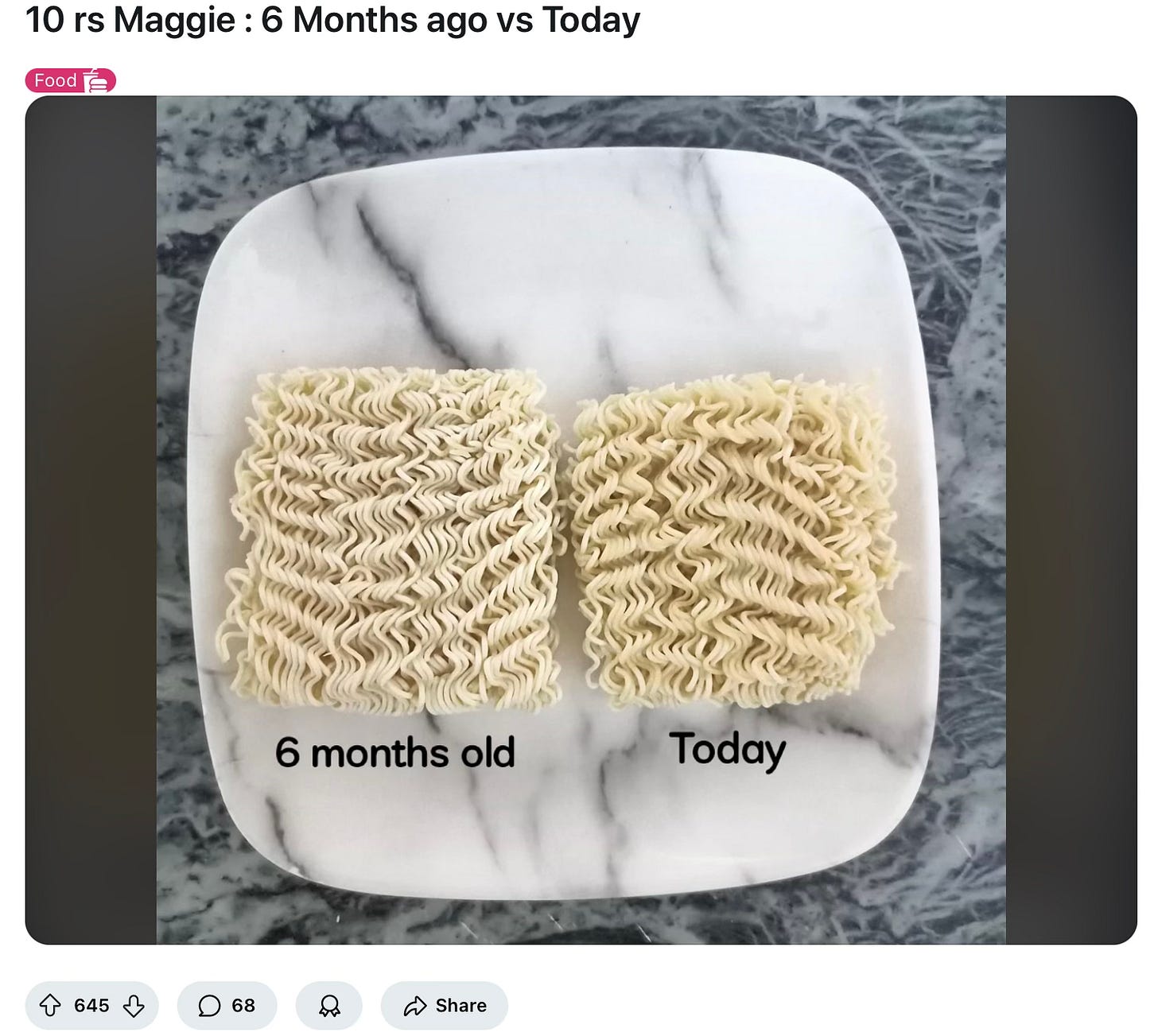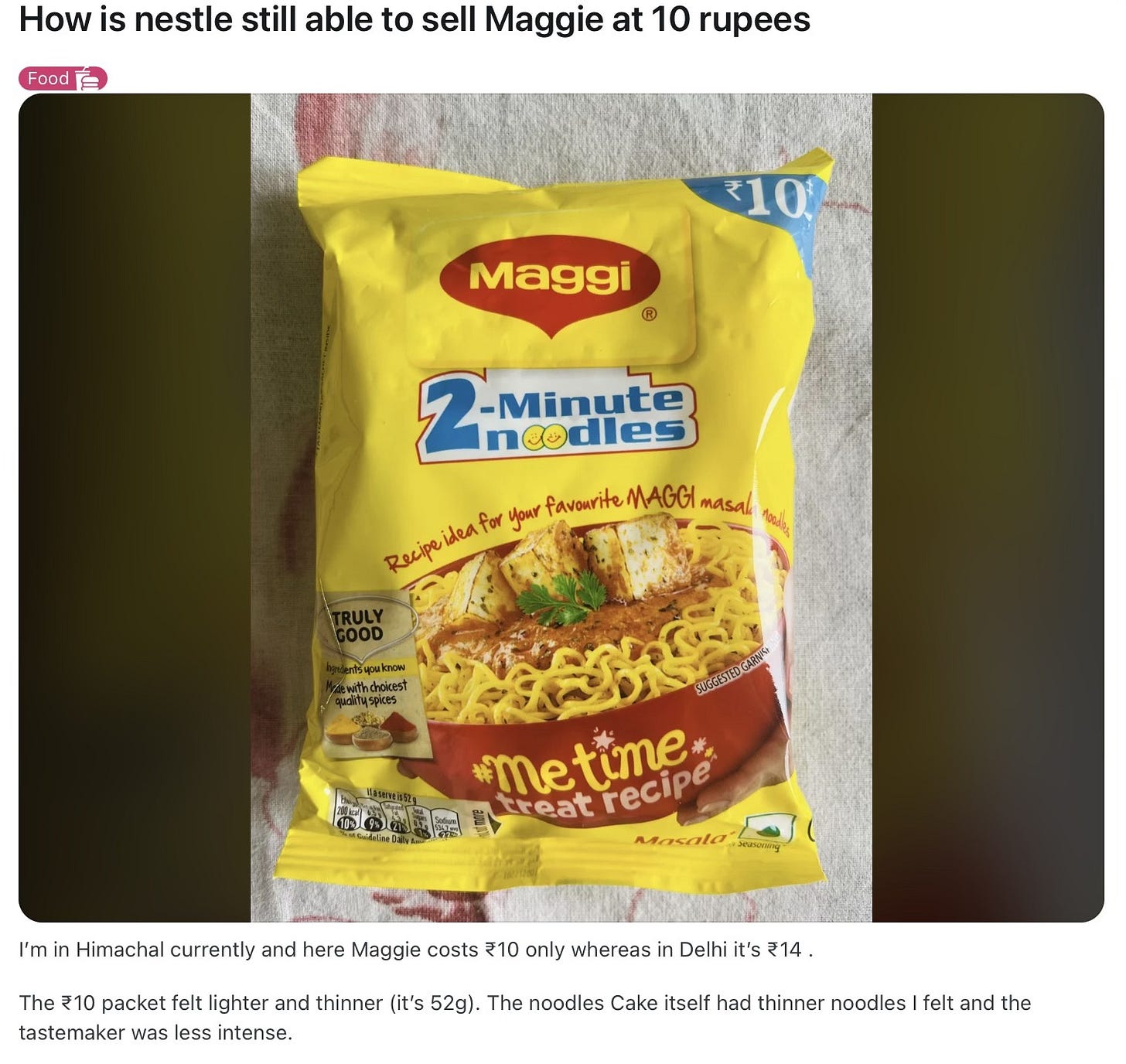When a continent-sized glacier loses the size of an ice cube every few months, no one notices. Until one day, Polar bears start to drop dead and we are forced to admit that climate change was real all along.
Large brands erode the same way – half percent share loss to a new brand here, one fewer purchase by a loyal consumer there, and two decades later, a proud 80% share brand is stuck at 60%.
Pond becomes ocean, the big fish grows bigger.
Even though your share has shrunk, the category you helped create has now expanded. So you take solace in the fact that you are bigger than before.
Until 1st April, when the counter resets to zero. A 3,000 crore ($338 Mn) brand must add at least 300 crores ($33 Mn). A 10% growth that will mildly please the bosses and disappoint Dalal Street1.
This mild erosion is the result of two opposing forces.
One. Consumers forget their first love…and new suitors oblige.
Fundamental needs are perennial. But desires evolve. As desires evolve, we become receptive to new, un-boring ways to fulfil our desires. And insurgent brands oblige.
When I was 10 years old, my monthly Maggi treat was the highlight of my life. Those were simpler times. The culture and our wallets had no room to accommodate frequent eating out.
Maggi was not just delicious, but also a new flavour for our palates. A break from the daily roti-dal-subzi2.
Cut to 30+ years later, much like even the spouse of the most beautiful woman gets bored, my taste buds seek excitement in Chings, Wai Wai and Koka.
And if I don’t want to cook, I call upon the Zomato-Swiggy gods to two-wheeler the world of khao suey, aglio olio or carbonara right to my doorstep.
I evolved from a stingy novice to a noodle connoisseur with a high ability and willingness to pay for better noodle experiences.
Did Maggi keep pace? Not for my kind of consumer profile3.
Two. Big brands regress. Or stay still.
As I was evolving from a stingy noodle novice to a noodle connoisseur with a high ability and willingness to pay for better noodle experiences, Maggi was moving backwards.
That’s because, like all big brands, Maggi finds itself stuck between a rock and a hard place.
It must deliver profit targets while wrestling with the headwinds of commodity price rise. At the same time, the government plays badminton with GST, and the consumer is unwilling to budge from the Rs 10-12 price.
As a result, brands like Maggi are forced to shrinkflate.
This goes on for years.
Then there are murmurs and whispers in corners of the internet.


Then one day, the quantity feels lesser, the flavour feels less potent, the whole experience feels a bit off, and after the fifth try, the consumer starts doubting her own memories.
In that moment of doubt, she reaches for Yippie.
The irony is that even though Yippie may have shrinkflated too, but since the consumer has no historical reference, Yippie feels new, fuller, and a tad better than Maggi.
This is how Maggi loses one usage occasion and Yippie gains one.
I guess this is one more reason why Byron Sharp is right when he says that we must target all potential consumers all of the time, because even one disappointed loyalist becomes a leaky bucket.
There is another painful truth hiding in plain sight.
Big brands don’t die from competition. They die from amnesia. They forget what made people fall in love with them in the first place. i.e. they stop optimising for Alpha, instead, they start optimising for quarterly targets.
More ways to connect
- Watch my Tedx talk
- Connect on LinkedIn
- Read old newsletters
- Subscribe to this Newsletter
1 India’s Wall Street
2 A typical north Indian meal – bread, lentils and vegetables
3 I am taking Maggi only as an example here, but this is an industry-wide reality, whether it be Colgate, Ponds, Parle G, Lux, Dettol, or Fair …beg your pardon.. Glow & Lovely
